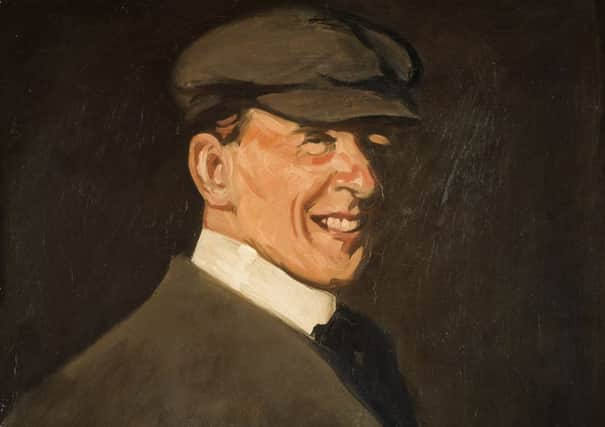JD Fergusson couldn’t fight because he hated khaki


The idea of being clothed head to toe in a colour Fergusson would not tolerate as a blob on his artist’s palette was enough for his wife to plead with military authorities for him to serve in an unofficial capacity as an artist with the Royal Navy, whose colour blue was more palatable to his eye.
The story of how one of Scotland’s finest painters of the 20th century came to be painting ships at Portsmouth docks in the summer of 1918 is to be told in the latest batch of World War One at Home stories made for BBC Radio Scotland.
Advertisement
Hide AdThe landmark project, which began in February of this year and is being broadcast in phases, features 1,400 powerful and moving stories linked to places across the UK and Ireland.
The Edinburgh-born artist was in the frame for conscription when the call-up age was raised in the final year of conflict. But after influential friends lobbied the Admiralty, he secured a position as an unofficial artist for the navy.
Alice Strang, senior curator at the Scottish National Gallery of Modern Art, researched archive material about Fergusson. She said: “In the spring of 1918, the upper age limit for enlistment was raised to 51. He was classed grade A1 fitness at his test because he was always a fine figure of a masculine specimen.
“He really did everything he could to avoid being sent to France.”
Fergusson wrote to Albert Yockney of the British War Memorials Committee at the Ministry of Information and suggested a committee of artists should be formed to decide how best to make use of their abilities during the war.
He wrote: “A man who has done good work for 20 years is surely entitled to a higher rank than he who has done good work for two years.”
Advertisement
Hide AdMs Strang said: “Fergusson came very close to being conscripted into the army and in fact his partner, the dance pioneer Margaret Morris, said he didn’t want to join the army because he didn’t like the khaki colour of the uniform.”
She said Mr Yockney was fundamental to keeping Fergusson away from the trenches and, on behalf of the artist, he petitioned a commodore in the Admiralty. Eventually, the Admiralty replied that it had “no objection” to Fergusson going to Portsmouth to “gather impressions for painting a picture” although it fell short of making him an official artist.
Advertisement
Hide AdMs Strang said she has the impression he treated it as a bit of a lark, staying in a nice hotel and enjoying good food. One of the results of his stay in the naval docks is Blue Submarine: Portsmouth which is in the Scottish National Gallery of Modern Art and normally hangs in the Fergusson Gallery in Perth.
The latest round of World War One at Home stories also features Dundee poet Joseph Lee, who was once ranked alongside Wilfred Owen and Siegfried Sassoon, but has since largely fallen out of public consciousness.
Lee, who served with the Black Watch, continued to write poems during his imprisonment by the German army in 1917.
It is thought his fame did not endure because he was more of a people’s poet than an anti-war writer and stopped producing poetry when he returned home.